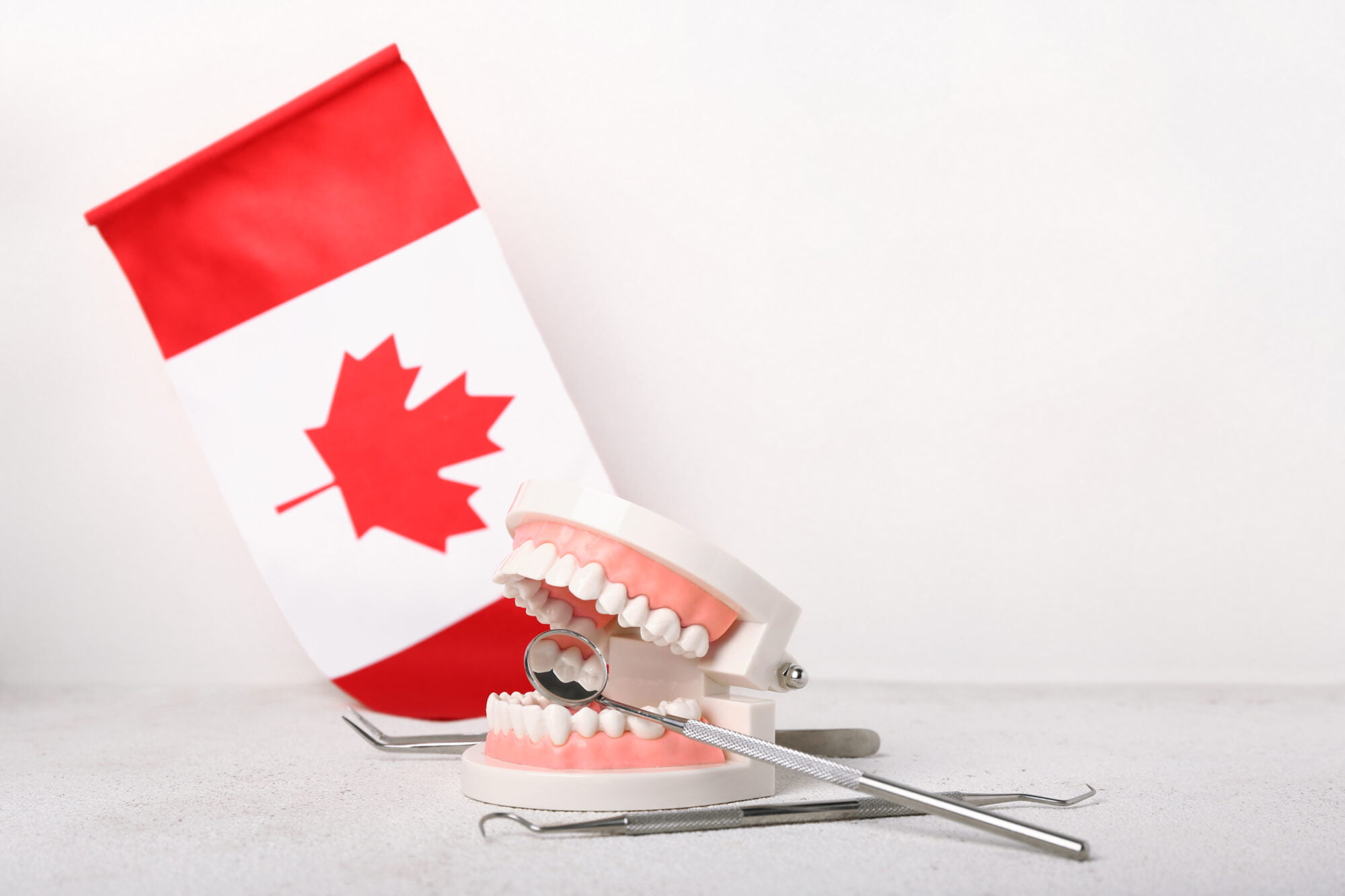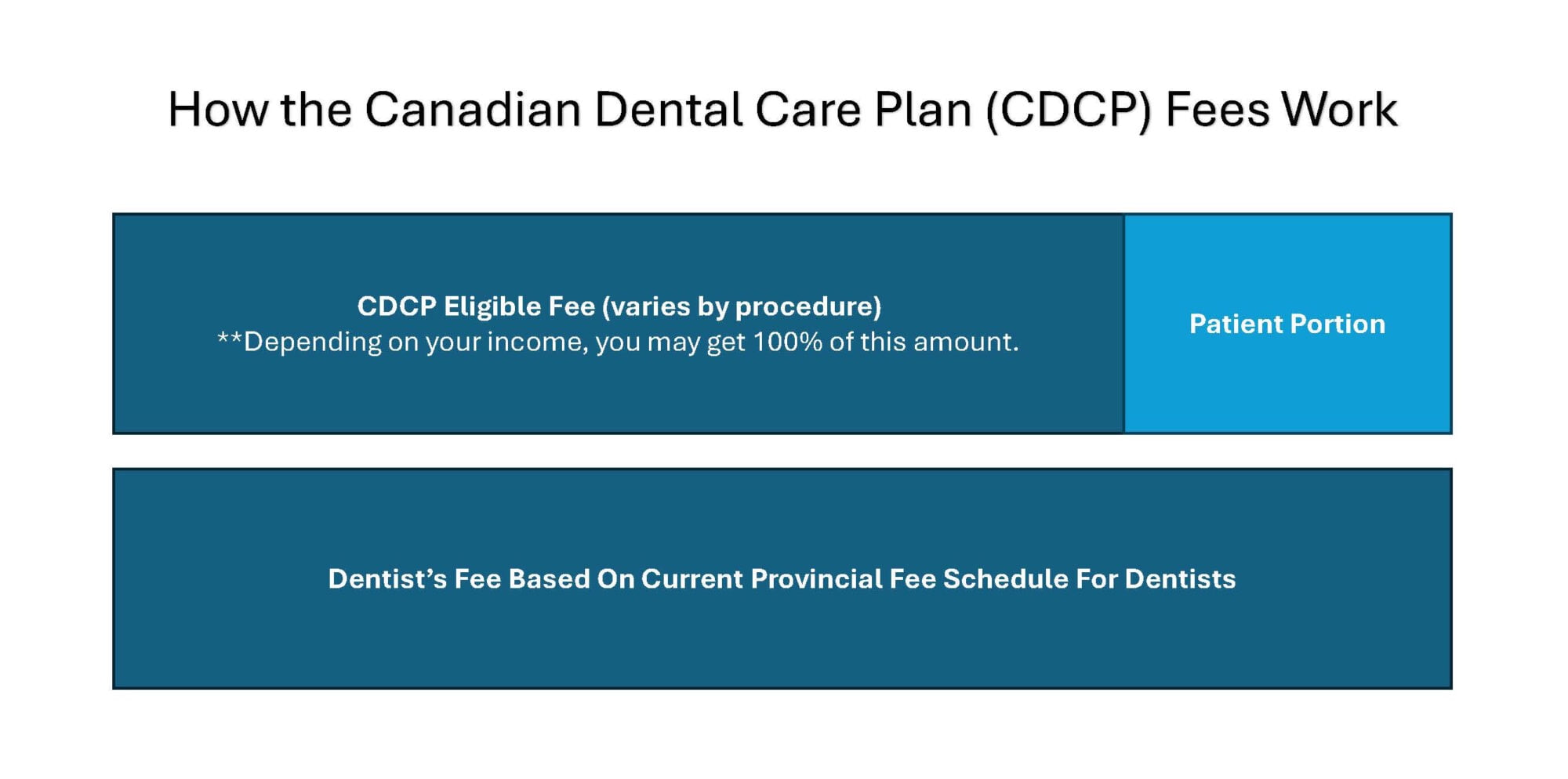In an era where oral health is increasingly recognized for its critical role in overall well-being, Canada’s introduction of the Canadian Dental Care Plan (CDCP) marks a significant step toward improving the accessibility and affordability of dental care. However, amidst the optimism, there remains a need for more clarification regarding the nature of the coverage provided under this new program. At our Calgary dental clinic, while we champion the initiative’s goal to broaden access to dental care, it’s important to clarify that the CDCP is not the blanket solution many Canadians believe it to be. This blog aims to shed light on the program’s intricacies, dispel common misconceptions, and guide you on how to best approach your dental care needs in light of the new plan.

Unveiling the Canadian Dental Care Plan
As we delve deeper into the Canadian Dental Care Plan, addressing one of the most common misunderstandings surrounding its rollout is crucial. While the initial announcement was received with widespread acclaim, a closer examination of the plan's structure reveals that it is not the blanket provision of free dental care many had anticipated. This section aims to clarify the realities of the CDCP, mainly focusing on the misconceptions about "free" dental care and how the program's copayment system is structured to operate across various income levels.
The Misconception of "Free" Dental Care
The Canadian government's announcement of the CDCP has been met with enthusiasm, yet the details reveal a nuanced picture. Contrary to widespread belief, the program only offers completely free dental care to some Canadians. Instead, it introduces a tiered copayment system where the percentage of out-of-pocket expenses varies significantly with the family's income level.
Copayment Structure: A Closer Look
For families earning below $70,000 annually, the program promises no copayment, providing full coverage. However, as income levels rise to the $70,000-$79,999 bracket, a 40% copayment is introduced, escalating to a 60% copayment for those in the $80,000-$89,999 income range. This sliding scale of copayment underscores the importance of understanding the plan's specifics relative to your financial situation.

The Reality Behind Coverage and Claims
As we delve deeper into the intricacies of the Canadian Dental Care Plan, it becomes essential to scrutinize the breadth of services covered and the depth of coverage provided. While the CDCP makes significant strides in broadening access to various dental services, understanding the limitations of this coverage is crucial for setting realistic expectations. The ambitious promise to encompass a wide range of dental needs brings to light the practical challenges many Canadian families face, especially those caught in the middle-income bracket, highlighting the gap between the ideal of comprehensive care and the reality of partial financial relief.
The Limitations of Coverage
The CDCP pledges to cover a spectrum of dental services, from preventive care like cleanings and fluoride treatments to more complex procedures such as root canals and dentures. Despite this, the program's funding only partially alleviates the financial burden for many Canadians, particularly those in middle-income brackets who are expected to shoulder a significant portion of their dental expenses. To find out exactly what’s covered and the official rollout schedule, browse the CDCP’s frequently asked questions here.
Navigating the Program's Uncertainties
As dental professionals, we navigate a landscape filled with unanswered questions regarding the CDCP's implementation and administration. The need for more detailed information on how dental offices manage the billing and reimbursement processes under this new scheme poses challenges for providers and patients trying to understand their coverage.
The Interim Canada Dental Benefit: Bridging the Gap
In the meantime, the Canada Dental Benefit (CDB) serves as an interim measure, targeting children under 12 from families without private dental insurance. Offering up to $650 per child annually, based on income, this benefit aims to address immediate dental care needs while the broader CDCP is rolled out.
Prioritizing Oral Health in the Wake of New Policies
While the CDCP is a step in the right direction, it's crucial for Canadians not to postpone necessary dental care in anticipation of future coverage. Delaying treatment can worsen dental issues, underscoring the importance of maintaining regular dental visits.
Our Commitment to Your Dental Health
Our Calgary dental clinic remains committed to providing exceptional care throughout this transition period. We diligently follow all developments regarding the CDCP and are here to assist you in understanding how these changes affect your access to dental care.
The rollout of the Canadian Dental Care Plan is a landmark moment for dental care in Canada, yet it's accompanied by a complex array of copayments and coverage levels that necessitate a thorough understanding and strategic planning. At our Calgary dental clinic, we are not just observers but active participants in this evolving landscape, committed to demystifying the process and ensuring you and your family continue to receive the quality dental care you deserve. As we await more details and clarity on the administration of the CDCP, we invite you to reach out with any questions or concerns about your dental health needs. Together, we can navigate these changes, ensuring your smile remains bright and healthy for years to come.
Do you have a dental concern that you’ve considered putting off? Contact our office to get the best recommendations for your oral health.
When was the last time you visited your dentist? Will you book more regular appointments once the CDCP is officially available? Share your thoughts with our readers in the comments below.



